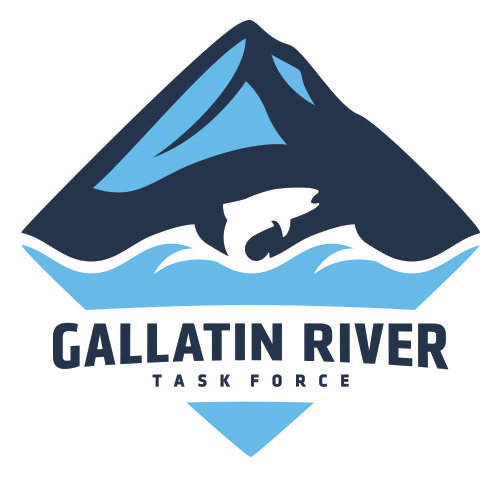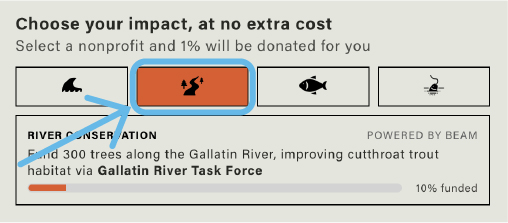As constant as the Gallatin River’s current are the ways in which we seek to access and enjoy all the experiences the river offers. The best spots are often secret ones; where you find the best fishing, the most serene riverside stroll, or the easiest launch spot for a float or a taste of whitewater. Over time, however, accessing these places can wreak havoc on the river. These are the places and the spaces that become a priority for restoration project sites for the Gallatin River Task Force.
How we (literally) get to the Gallatin impacts the health and sustainability of riparian areas, streamside habitat, vegetation, and the river in general. Well-worn, and sometimes rogue, access points are prevalent within publicly accessible forest lands along the Gallatin, creating the need for a host of restoration options. At its most basic level, river restoration is defined as “the process of managing rivers to reinstate natural processes to restore biodiversity, providing benefits to both people and wildlife”.
Long-term restoration planning for the Gallatin is vital to its future, and partnerships to implement them are critical. When completed, these prioritized projects will help improve and preserve the river’s most popular access points and adjacent lands. With the help of the U.S. Forest Service, the Gallatin River Restoration Strategy identified a total of 91 sites with a total cost to restore at $3.5+ Million. According to U.S. Forest Service representative and project partner Kathryn Barker, “Working collaboratively with groups like the Gallatin River Task Force helps us establish sustainable river access points that maintain the availability of recreation, and also reduce the negative effects of dispersed use on the watershed”.
Improving river habitat is part of a balanced strategy to protect the Gallatin. Projects like the one completed by the Task Force at Upper Deer Creek restored 1,044 feet of streamside vegetation known as the riparian buffer. Additional improvements at the site included 2 designated parking areas, a handicap accessible trail, a fishing platform, a concrete boat launch, and kayak launch. The project provided necessary infrastructure improvements, addressing the proliferation of visitor-created roads and trails and heavy use at non-designated access points. Upgraded infrastructure now directs river users to appropriate access points, eliminating rogue access and providing the necessary means to reduce and mitigate potential conflicts and resource damage.
Growing recreation pressure on the Upper Gallatin River is a significant contributor to threats against river health. Through partnerships like the one with the Forest Service, the Task Force has developed an ambitious plan that includes additional improvements to public access sites along the river. Next on the list of significant priority areas for restoration is the Porcupine/Beaver Creek area, which when completed will be the third large-scale restoration project undertaken by the Task Force. It was selected as a priority site due to the broad range and volume of recreation use and includes the confluence of Beaver Creek, the Gallatin, and the Porcupine trailhead.
Restoration projects are intended to restore degraded streambeds, riparian and wetland conditions, improve fish passage and prevent vehicle and sediment pollutants from entering the river. Secondary to that is the goal of improving recreational access, and reducing conflicts between the variety of river users that regularly visit the Gallatin. To accomplish this, the restoration work will include elements like stream channel restoration and floodplain reconnection, best practices for managing stormwater, and enhancing and riparian buffer areas, along with trail improvements, designated river access and improved or new parking areas.
Rogue access disrupts the plant life habitat along the river, causing undue degradation that can be reduced with strategic project elements. We know that plant roots act like glue, holding streambanks together, reducing erosion, and filtering pollutants. Streamside vegetation provides food, cover, and cool water for fish and insects. Increased use over time degrades these essential elements, and strategic, well-planned restoration projects restore the health of these areas. The end goal is to keep access open and protect critical pieces of a healthy river. By reducing unmanaged recreation, and providing sustainable river access points along the Gallatin, we can reduce the deterioration, and create a more sustainable pattern for both the ongoing use, and healthy habitat.
The preservation benefits to the Gallatin as a result of these projects are invaluable, and implementation of recreation and ecological restoration projects ultimately depends equally on commitment, resources, and funding from local, state, public and private partners. It’s an investment we can all get behind.




